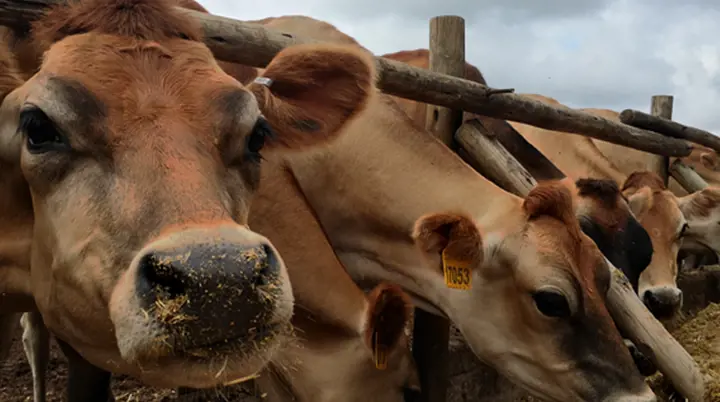Effective grouping structures for improved margins
The profitability of the dairy industry is under severe pressure. We are confronted with high feed costs and low milk prices. The success of today’s dairy operations lies in making management decisions based on income over feed costs. The importance of margin management and the grouping of dairy cows go hand in hand. The goal is to maximize milk output relative to feed input.

Margin management
Margin is the main driver of an economic unit. There are several variables to consider when making margin-based decisions on farms. The formula below includes broad-based variables that can be used to determine effective cut-off points in a dairy production unit to ensure that margins can be effectively maintained. The formula establishes the cut-off point for cows in each group according to their milk production (in litres) based on variables such as current feed cost, fixed costs, desired margin and current milk price.
Feed cost + fixed cost + margin = Total cost
Total cost/milk price = Cut off point (litres)
Feed cost: Feed costs account for 40-65% of the total production cost of a dairy operation. Feed costs include roughage, concentrate and supplement costs. Cows are ruminants, and their diets are mainly roughage-based. Roughage is the cheapest source of nutrients, and when a farmer can produce good quality roughage, he lowers his feed cost substantially. Another parameter to look at is feed conversion efficiency. Feed conversion efficiency is defined as the amount of energy-corrected milk produced (kg) per kg of dry matter intake. De Heus developed a concept called Milk Margin Monitor that measures various parameters that enable the farmer to see in which areas of his business he can improve. Below is an example of a Milk Margin Monitor graph showing how a good feed conversion efficiency may improve the margin. Consult with a nutritionist to formulate a well-balanced ration; this will improve the feed conversion efficiency and, subsequently, margins.
Fixed cost: This includes labour, machinery, fuel, electricity and any additional cost integral to the business unit. It is predicted that labour and energy costs will only increase. Calculate whether it is economically viable to milk all production groups three times a day, milking only the top producers three times per day may reduce fixed costs. When we increase cow numbers and production per cow, we automatically dilute the fixed cost effect.
Margin: The margin is group-specific. The farmer decides this value. It is important to keep in mind that the margin of each group differs. The margin on a high-producing group is usually higher than the margins made on the lower-end groups purely based on the fact that these animals have more efficient production due to their stage of lactation. Deciding which target margin will be used is an important part of the sum and should be based on farm goals as well as farm history. Being too strict could cause too few animals in production. Being too lenient again defies the point of margin management and would have no added value for the farmer.
Total cost: Consists of the feed cost, plus fixed cost, plus desired margin per individual. The total cost divided by the current milk price gives us the cut-off point. The cut-off point is the minimum litres of milk the cow must produce per day to achieve the desired margin for that group and thus justifies the cow being in that certain group. If her production is lower than the cut-off point, the cow needs to be moved to a lower-producing group and fed accordingly.
Overriding factors: Production is not the only criteria when doing group changes. If a cow has a low body condition score, she should not be moved to a lower-producing group regardless of her production. A decision should be made as to the reason for her low condition, whether she will be kept for later lactations or culled from the herd. If she is destined to stay in the herd, she should be kept in a group better than her margin allows to give her a chance to recover in body condition for the next lactation. Another factor to consider is days in milk. Group changes according to production should preferably not be made before 60 days in milk, as the lactating cow is still building up towards peak production. A cow should be allowed to peak on the best ration available before a call is made on which group she should be in.
Example:
Feed cost (R 90.23/cow/day) + fixed cost (R10/cow/day) + desired margin (R65/cow/day) = R165.23/cow/day
165.23(Total cost) / R5.05 (Current milk price) = 32L cut off point.
Lower groups, thus, would have a lower feed cost as they are on a cheaper ration and lower DMI and would have a lower expected margin due to being later in lactation and thus having a lower feed efficiency.
Grouping
Dividing the cow herd into feeding groups based on their nutrient requirements and daily production allows for tailor-made rations, which will increase income over feed cost and decrease nutrient excretion into the environment.
It is important to emphasize the following groups: First lactation heifers, fresh cows, mature lactating cows and dry cows.
First, lactation heifers: Heifers are smaller than mature lactating cows, thus making it difficult to compete at feed bunks. According to recent studies, primiparous cows grouped separately resulted in an 11.8% increase in dry matter intake, as eating time improved by 11.4%. Resting time improved by 8.8%, and one can also expect an improvement in milk production, health and less stressed heifers. Grouping first lactation heifers improves profitability from many angles, such as long-term sustainability, higher peak, lower herd replacement cost, better conception and ensuring the growth of heifers to their full potential before the end of lactation.
Fresh cows Should be grouped separately for 21 days; this allows for cows to be closely monitored for metabolic- and post-calving problems. Less competition will increase their feed intake sooner and subsequent milk production. More dense diets can also be fed during this stage to minimize negative energy balance as far as possible.
Mature lactating cows: Homogenous groups can be made based on nutritional needs and production and MARGIN, as discussed above. High-producing cows are usually in a negative energy balance and need a diet with a higher concentration of nutrients. Lower-producing cows are usually late lactating animals and have a positive energy balance, and it would be uneconomical to feed them a high-cost ration. This ration should support milk production but avoid excessive weight gain.
Dry cows: Preparation of the cow for her next lactation, this group can be split into 2, namely, the far-off group and the close-up group, however, late lactation groups and early fresh groups should be seen in the same planning and process of dry cow management. The far-off group consists of cows that have been dried off until 21 days pre-partum. This group receives a roughage-based ration. The close-up group includes cows with a minimum of 14 days and a maximum of 21 days before the expected calving date. These cows have a lower feed intake, this group allows for ration modifications to achieve the correct amino acid balance as well as ionic salts (DCAD) to reduce future metabolic issues.
Factors influencing group size and number of groups
One of the most important factors influencing milk production is feed intake. The homogenous grouping strategy alters feeding behaviour, improves dry matter intake and thus has an enormous impact on cow productivity, herd health and farm profitability. The primary goal of grouping animals according to nutritional needs is to increase their feed intake.
Other factors influencing group size are: 1.) Feedbunk space and water availability: feedbunk space of 70cm/lactating cow and 100cm/ fresh cow. 2.) Size of holding area and capacity of milking palor: cows should not spend longer than 45 minutes up to an hour in the holding area. 3.) Social interaction, body size and age to limit competition at troughs. 4.) Ability to deliver different rations to different groups, labour and management constraints.
Additionally, social stabilization between cows should be kept in mind and takes from three to seven days. Grouping should decrease negative social interaction by decreasing competition and dominance due to age, size and dominance.
Summary
It is important to remember that these concepts may not necessarily reduce costs per cow but rather costs per litre of milk produced, which is vital in the commodity market.
Effective grouping also alleviates metabolic disorders and death losses, this indirectly improves herd profitability.
Genetics, nutrition and management factors should be addressed and revised daily to improve overall production and farm efficiency. Surround yourself with professionals and nutritionists who can monitor the performance of the different production groups, formulate group-specific rations and understand the importance of the financial health of your business.
Effective grouping will decrease within-group variation and increase variation between groups. These homogenous grouping strategies can improve productivity, efficiency and, ultimately, profitability, which results in a successful dairy.
